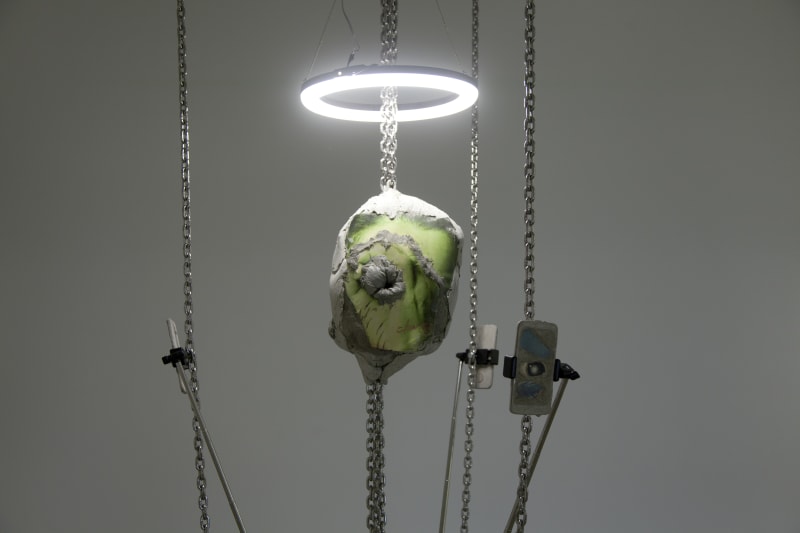Matheus Rocha Pitta: Pop Commandment
Matheus Rocha Pitta, in sync with the current public debate about the visibility of images of violence, tackles, through the body of work that forms the Pop Commandment (Mandamento Pop) exhibition, the perenniality and fleetingness of photographs of conflicts. Through inscription in stone (literally infusing newspaper clippings into cement tombstones), the artist readdresses the status of war portraits as images, amalgamating reminiscences of the past with fulgurations of the future.
Through sculptures, the infrastructures of which are networks of images juxtaposed with direct cuts, his provocation, when linking the corporeity of the eyeball to the intangibility of the public sphere, confronts us with an everyday dilemma: immersed in the awfulness of the media ecosystem, the principle and end of which is to sustain itself, is there a way of conceiving images beyond our concentric circles of broadcast and reception? Does "Bursting the Bubble", as the name suggests, expose us to, or protect us from, the evil (that we are)?
It is apt that the nickname of the principal device that deals with the fertile terrain of telematic images contains the word "selfie". A panoptic logic has saturated with images not only our everyday existence, but our worldview, through an obsession with cataloguing experience. While the idea of erasure generates terror, forgetfulness has become a practice of memorial, as it is in the technical apparatus itself that programmed obsolescence resides, as a mnemonic procedure.
The blurred lines between record and experience, from which this new realism manifests itself, contemplate the industrial culture of the media, revealing a collective memory formed by the discontinuity of images; an iconography that results from liquefaction. We adapt to these practices, promoting profound changes in the ways in which we think and live, most related to the landscape of cyberculture, which has forged new forms of perception about the self and the other.
Lygia Clark, represented here in a concrete manner as an incorporated spectrum of a portrait in which an eye observes, through it and vice versa, could not be a more appropriate invitee. Her work Goggles (Óculos), from 1968, consists of a sensorial object, as the artist describes it, composed of eye masks that can be used and experienced by a single person, or two people facing each other, inviting encounters and missed connections, glances and gazes. A convergence via overlap.
Such technical devices anticipate the dynamics of the domestication of vision as a mechanism for controlling bodies, imposed by the normative systems of our Society of the Spectacle, and question the notion of a single vision of the modern subject, especially in relation to individuals embedded in the neoliberal consumption of entertainment. Here, in an updating in stone, the human and the gaze merge, as if in a spherical universe that simultaneously isolates and permeates. "Everything around a hole is an edge".
On this battlefield, in which practices of self-image are challenged, deeply intertwined alliances emerge, through which we conform to true writings of the self. Sphinx-like images that challenge the pit in which we seek to delineate limits that determine whether it is the images that bear the people, or the people who bear the images. In an era of deep fakes, only one truth is possible – this could be a lie.
It is as though these artists have dispensed with certain points to aim their vision at themselves - not only the physical act of looking at something, but also the fact that there is not a single, but multiple visions. Via consumer machinery, especially digital means, we swallow images like reheated pizzas, almost as though in celebration of the voracious cannibals and the centenary of soup cans. Like a horrified Narcissus, Pop Art covers life anew, as an invitation to autophagy: man is the eye of man.
Leno Veras













